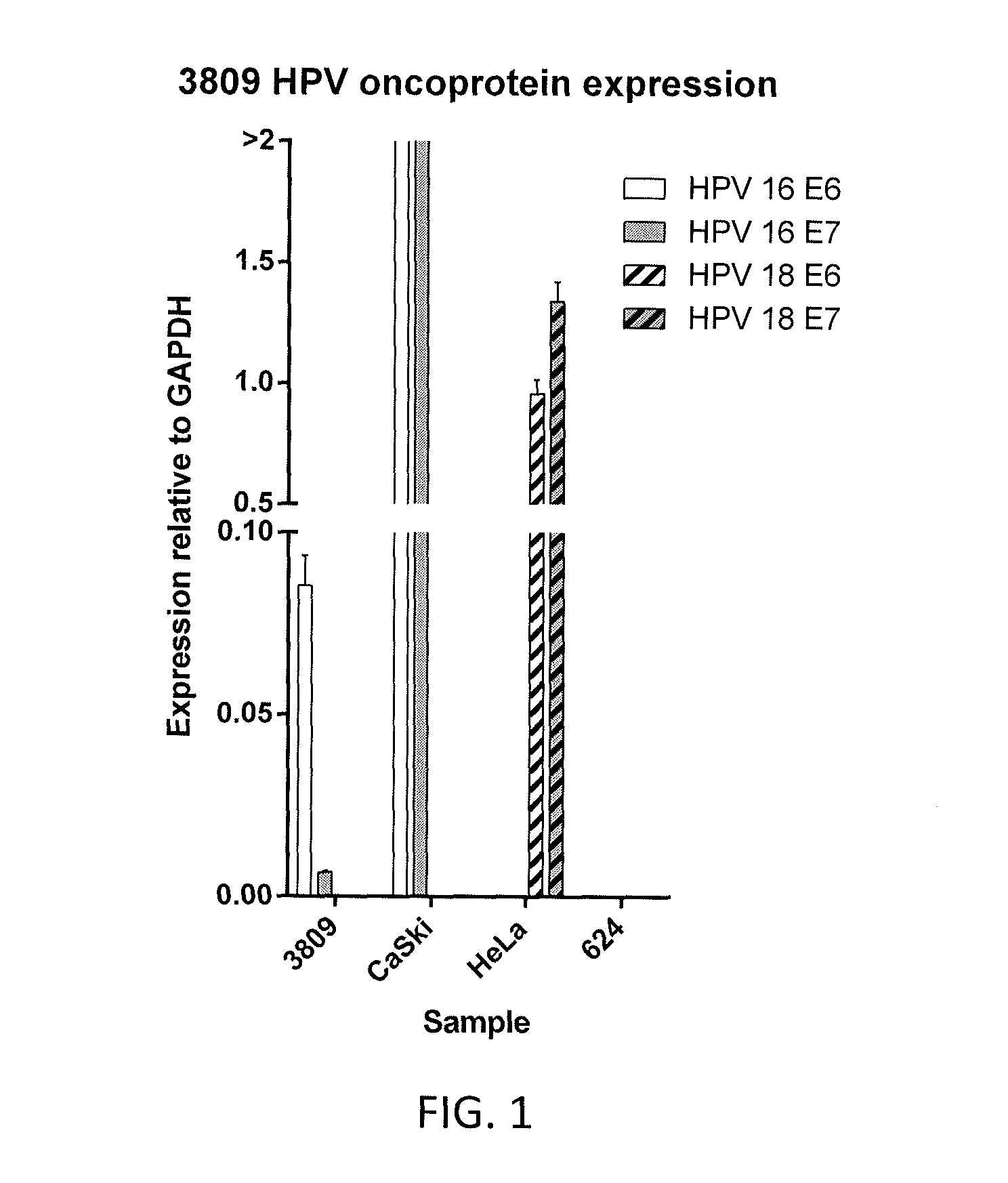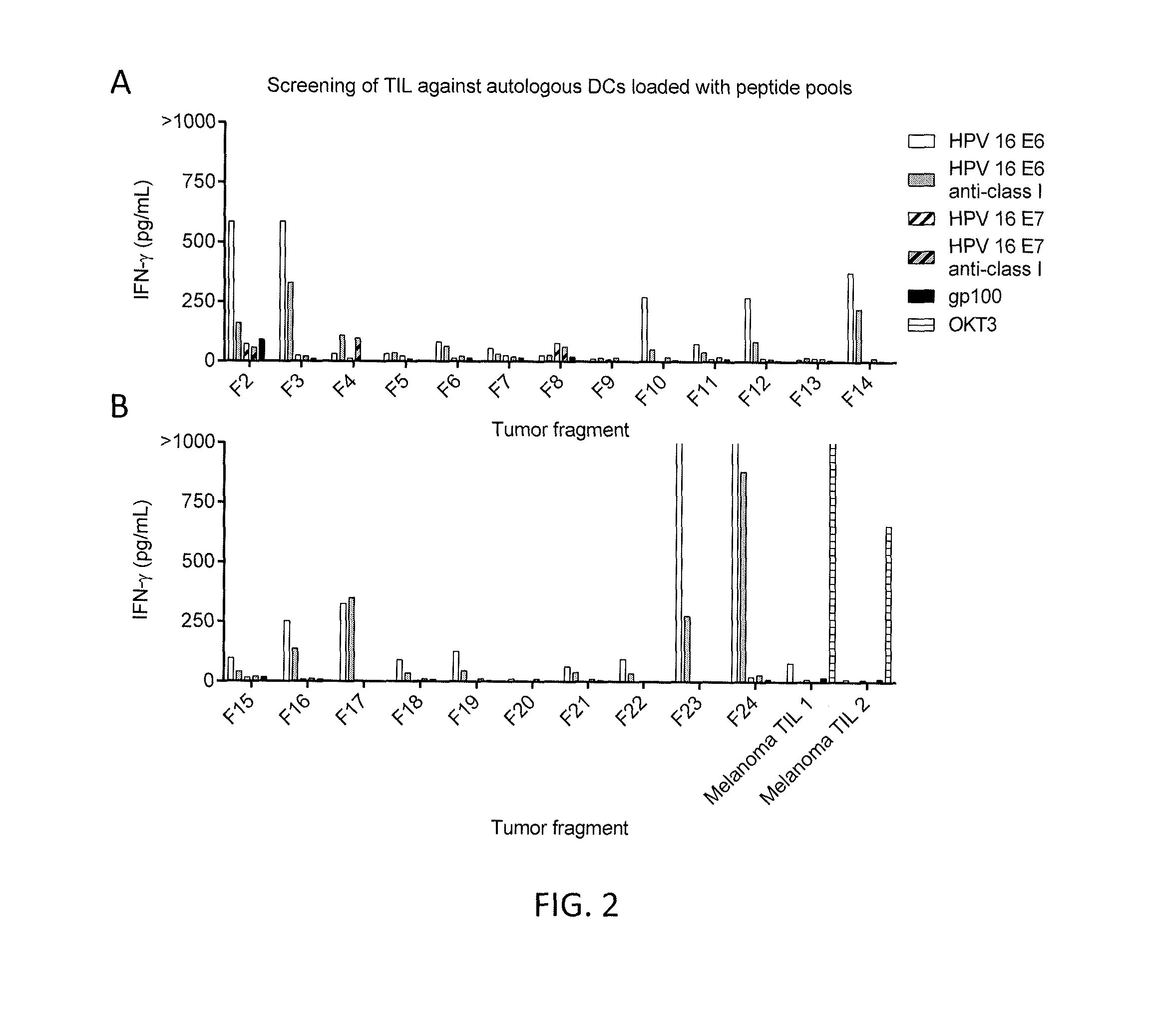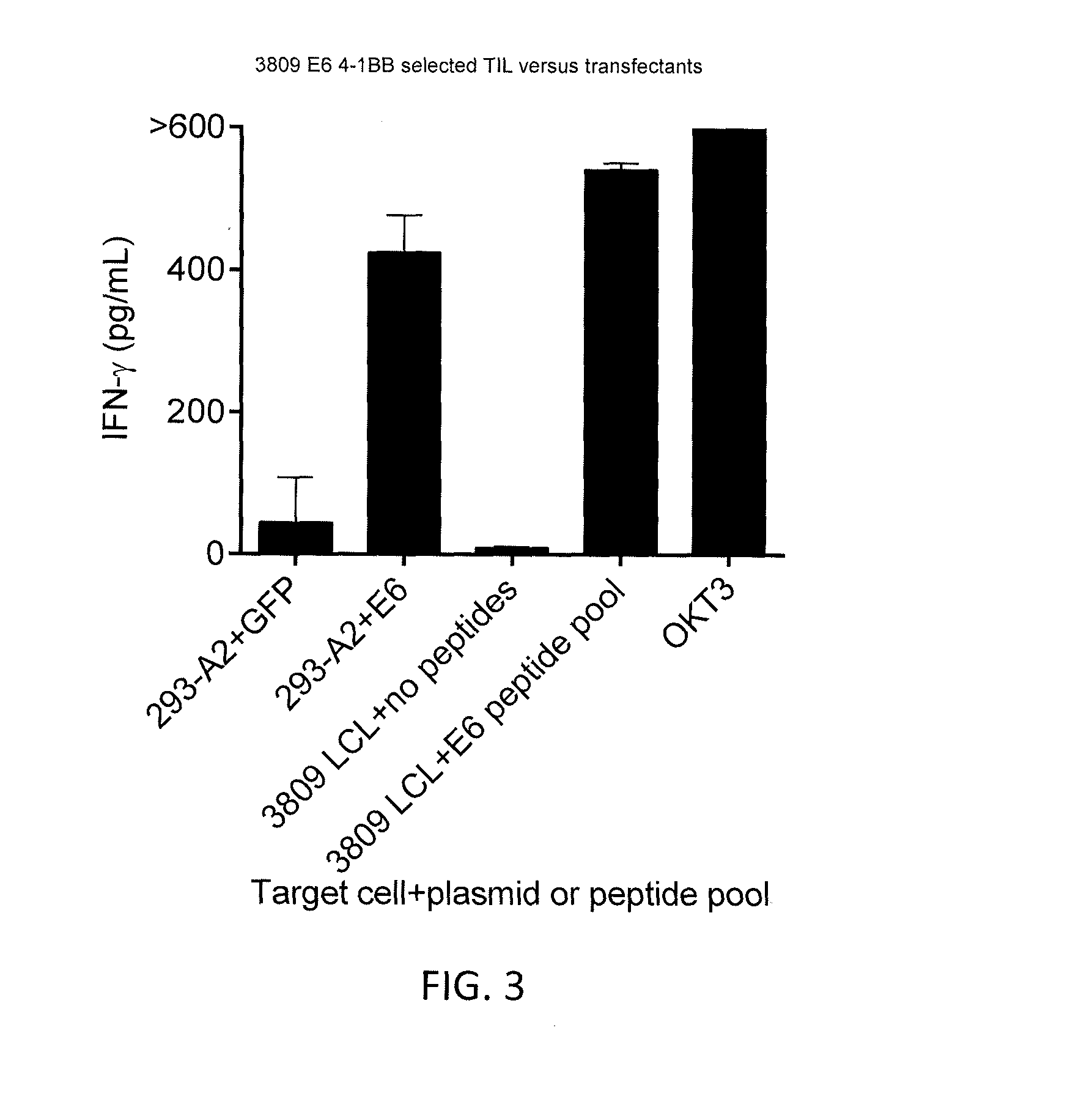Anti-human papillomavirus 16 e6 t cell receptors
a human papillomavirus and receptor technology, applied in the direction of peptide/protein ingredients, depsipeptides, fusion polypeptides, etc., can solve the problems of poor prognosis of many cancers, including hpv-associated cancers
- Summary
- Abstract
- Description
- Claims
- Application Information
AI Technical Summary
Benefits of technology
Problems solved by technology
Method used
Image
Examples
example 1
[0105]This example demonstrates the isolation of human anti-HPV 16 TCRs from tumor.
[0106]A sample of a metastatic HPV 16 E6-positive anal cancer tumor (tumor 3809) was obtained from a patient. The tumor sample was analyzed for expression of HPV 16 E6, HPV 16 E7, HPV 18 E6, and HPV 18 E7 relative to glyceraldehyde 3-phosphate dehydrogenase (GAPDH) by reverse transcriptase (RT) polymerase chain reaction (PCR). Relative expression of HPV 16 E6, HPV 16 E7, HPV 18 E6, and HPV 18 E7 was compared to that of CaSki cells, HeLa cells, and 624 cells (melanoma cell line). The results are shown in FIG. 1. As shown in FIG. 1, the tumor 3809 sample was positive for HPV 16 E6 expression.
[0107]The tumor 3809 sample was divided into 24 fragments and tumor infiltrating lymphocytes (TIL) were obtained from the various fragments. The TIL were co-cultured in a 96-well plate with autologous immature dendritic cells (DCs) which had been pulsed with HPV 16 E6 alone, HPV 16 E6 in combination with anti-class ...
example 2
[0112]This example demonstrates a method of making a chimeric anti-HPV 16 TCR comprising a human variable region and a mouse constant region.
[0113]A nucleotide sequence encoding a chimeric TCR including a mouse constant region and a human variable region was prepared as follows. The nucleotide sequences encoding the original (human) constant regions of the alpha and beta chains of the TCR obtained in Example 1 (constant region amino acid sequences of SEQ ID NOs: 23 and 24, respectively) were excised and replaced with nucleotide sequences encoding a murine constant region of the alpha and beta chains, respectively. The resulting nucleotide sequences encoding the chimeric alpha and beta chains were cloned into a single nucleotide sequence with a nucleotide sequence encoding a picornavirus 2A peptide positioned between the alpha and beta chains. The combined nucleotide sequence was codon-optimized (opt) for expression in human tissues to provide a vector insert (SEQ ID NO: 29). The vec...
example 3
[0114]This example demonstrates that peripheral blood lymphocytes (PBL) transduced with a recombinant expression vector encoding the amino acid sequences of SEQ ID NOs: 17 and 18 specifically recognize HPV 16-positive tumor cell lines in an HLA-A2-restricted manner.
[0115]Peripheral blood lymphocytes (PBL) were transduced with the expression vector of Example 2 and were co-cultured with target 293-A2 cells pulsed with HPV 16 E629-38 peptide, 293-A2 cells pulsed with HPV 16 E711-19 peptide, 293-A2 cells transduced with a plasmid encoding HPV 16 E6, 293-A2 cells transduced with a plasmid encoding GFP, 293 cells transduced with a plasmid encoding HPV 16 E6, 624 cells transduced with a plasmid encoding HPV 16 E6, 624 cells transduced with a plasmid encoding HPV 16 E7, SCC 152 cells, SCC90 cells, CaSki cells, HPV-18 cervical cancer cells, melanoma control cells, cholangio control cells, 624 cells, or SiHa cells. IFN-γ was measured. The results are shown in FIG. 4A. As shown in FIG. 4A, PB...
PUM
| Property | Measurement | Unit |
|---|---|---|
| concentration | aaaaa | aaaaa |
| concentration | aaaaa | aaaaa |
| concentration | aaaaa | aaaaa |
Abstract
Description
Claims
Application Information
 Login to View More
Login to View More - R&D
- Intellectual Property
- Life Sciences
- Materials
- Tech Scout
- Unparalleled Data Quality
- Higher Quality Content
- 60% Fewer Hallucinations
Browse by: Latest US Patents, China's latest patents, Technical Efficacy Thesaurus, Application Domain, Technology Topic, Popular Technical Reports.
© 2025 PatSnap. All rights reserved.Legal|Privacy policy|Modern Slavery Act Transparency Statement|Sitemap|About US| Contact US: help@patsnap.com



